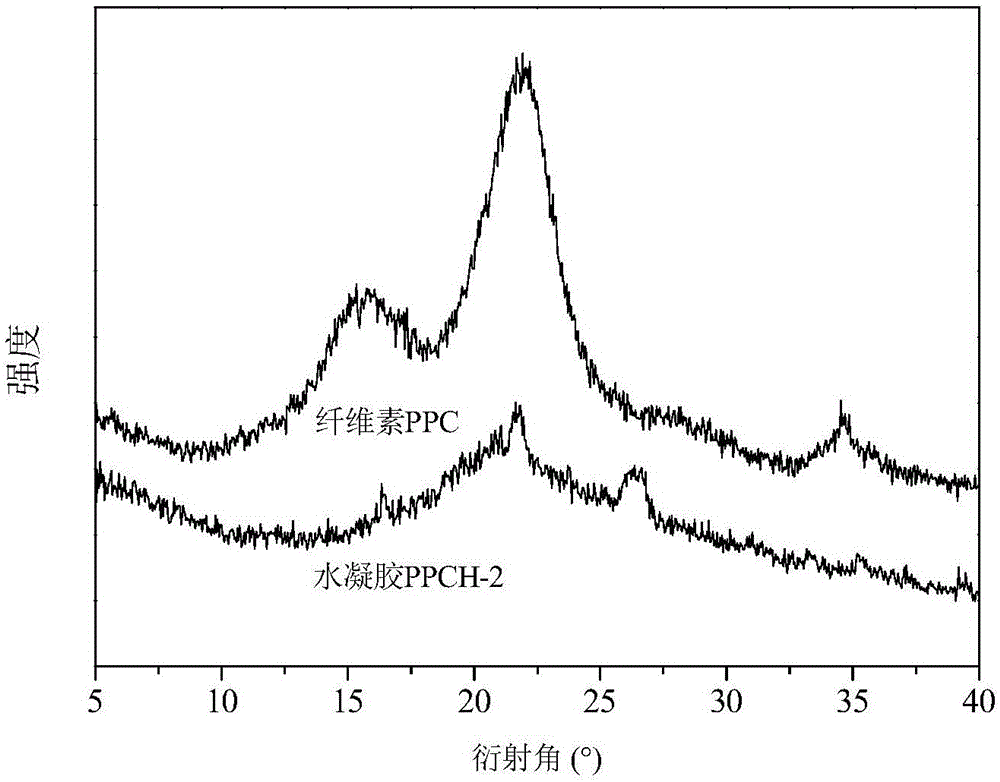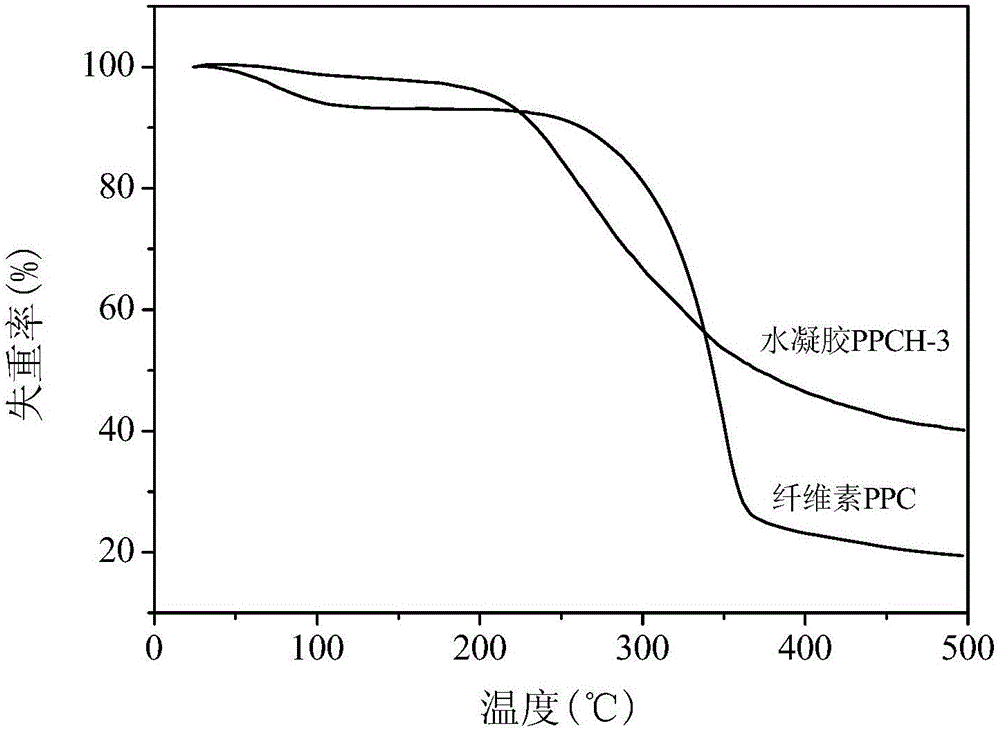Novel pineapple peel residue cellulose-g-acrylic acid-kaolin-cuttlefish ink hydrogel and preparation method and application thereof
A technology of pineapple peel residue and cellulose, which is applied in the field of composite hydrogel, can solve the problems of high-value utilization of cellulose, and achieve the effects of low equipment requirements, abundant and easy-to-obtain materials, and improved application performance
- Summary
- Abstract
- Description
- Claims
- Application Information
AI Technical Summary
Problems solved by technology
Method used
Image
Examples
Embodiment 1
[0048] (1) The pineapple pomace was cleaned and beaten, dried at 50°C for 36 hours, pulverized and sieved under 80 mesh to obtain pineapple pomace powder;
[0049] (2) Mix pineapple peel residue powder with distilled water at a solid-liquid ratio of 1:20g / mL, heat in a water bath at 70°C for 2 hours, and collect the filter residue after filtration for bleaching treatment. Use sodium chlorite solution with a mass fraction of 7.5% as the bleaching agent, the ratio of solid to liquid is 1:15g / mL, adjust the pH value of the solution to 3.8 with 4mol / L hydrochloric acid solution, and bleach at 70°C for 2 hours;
[0050] (3) Collect the insoluble matter after bleaching treatment by filtration, wash with distilled water until neutral, then wash three times with ethanol solution with a volume fraction of 95%, air-dry at room temperature for 2 hours, and dry at 50°C for 18 hours to obtain crude pineapple pomace cellulose;
[0051] (4) Mix the crude pineapple pomace cellulose with 10% s...
Embodiment 2
[0056] (1) The pineapple pomace was cleaned and beaten, dried at 55°C for 24 hours, pulverized and sieved under 100 mesh to obtain pineapple pomace powder;
[0057] (2) Mix pineapple peel residue powder with distilled water at a solid-liquid ratio of 1:25g / mL, heat in a water bath at 75°C for 3 hours, and collect the filter residue after filtration for bleaching treatment. Use sodium chlorite solution with a mass fraction of 8.0% as the bleaching agent, the ratio of solid to liquid is 1:20g / mL, adjust the pH value of the solution to 3.9 with 4mol / L hydrochloric acid solution, and bleach at 75°C for 3h;
[0058] (3) Collect the insoluble matter after bleaching by filtration, wash with distilled water to neutrality and then wash with ethanol solution with a volume fraction of 95% for 4 times, air-dry at room temperature for 3 hours, and dry at 55°C for 20 hours to obtain crude pineapple pomace cellulose;
[0059] (4) Mix the crude pineapple pomace cellulose with 10% sodium hydro...
Embodiment 3
[0064] (1) The pineapple pomace was cleaned and beaten, dried at 55°C for 30 hours, pulverized and sieved under 100 mesh to obtain pineapple pomace powder;
[0065] (2) Mix pineapple peel residue powder with distilled water at a solid-liquid ratio of 1:20 g / mL, heat in a water bath at 80°C for 3 h, and collect the filter residue after filtration for bleaching. Use sodium chlorite solution with a mass fraction of 7.5% as the bleaching agent, the ratio of solid to liquid is 1:20g / mL, adjust the pH value of the solution to 3.9 with 4mol / L hydrochloric acid solution, and bleach at 80°C for 3h;
[0066] (3) Collect the insoluble matter after bleaching by filtration, wash with distilled water to neutrality, then wash 5 times with ethanol solution with a volume fraction of 95%, air-dry at room temperature for 3 hours, and dry at 55°C for 18 hours to obtain crude pineapple pomace cellulose;
[0067] (4) Mix the crude pineapple pomace cellulose with 10% sodium hydroxide solution with a...
PUM
| Property | Measurement | Unit |
|---|---|---|
| adsorption capacity | aaaaa | aaaaa |
Abstract
Description
Claims
Application Information
 Login to View More
Login to View More - R&D
- Intellectual Property
- Life Sciences
- Materials
- Tech Scout
- Unparalleled Data Quality
- Higher Quality Content
- 60% Fewer Hallucinations
Browse by: Latest US Patents, China's latest patents, Technical Efficacy Thesaurus, Application Domain, Technology Topic, Popular Technical Reports.
© 2025 PatSnap. All rights reserved.Legal|Privacy policy|Modern Slavery Act Transparency Statement|Sitemap|About US| Contact US: help@patsnap.com



